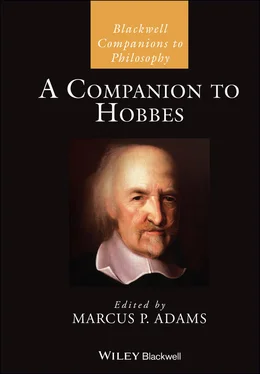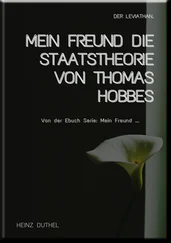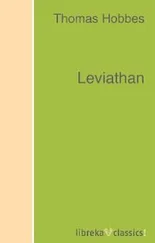33 Medina, José. 1997. “Les Temps Chez Hobbes.” Études Philosophiques 2: 171–90.
34 Morford, Mark. 1991. Stoics and Neostoics: Rubens and the Circle of Lipsius. Princeton: Princeton University Press.
35 Riverso, Emanuele. 1991. “Denotation and Corporeity in Leviathan.” Metalogicon IV: 78–92.
36 Sambursky, Samuel. 2014. Physics of the Stoics. Princeton: Princeton Legacy Library.
37 Sarasohn, Lisa T.2010. The Natural Philosophy of Margaret Cavendish. Baltimore: Johns Hopkins University Press.
38 Saunders, Jason. 1955. Justus Lipsius: The Philosophy of Renaissance Stoicism. New York: Liberal Arts Press.
39 Slowik, Edward. 2014. “Hobbes and the Phantasm of Space.” Hobbes Studies 14 (2014): 61–79.
40 Sorabji, Richard. 1988. Matter, Space & Motion: Theories in Antiquity and Their Sequel. Ithaca: Cornell University Press.
41 Spragens, Thomas A.1973. The Politics of Nature: The World of Thomas Hobbes. Lexington: University Press of Kentucky.
42 Springborg, Patricia. 2010. “Hobbes’s Fool the Stultus, Grotius, and the Epicurean Tradition.” Hobbes Studies 23: 29–53.
43 Springborg, Patricia. 2012. “Hobbes’s Challenge to Descartes, Bramhall and Boyle: A Corporeal God.” British Journal for the History of Philosophy 20: 903–34.
44 Stanley, Thomas. 1655–1660. History of Philosophy, 3 vols. London: Humphrey Mosley and Thomas Dring.
45 Tertullian. 1885. The Ante-Nicene Fathers, Vol. III: Tertullian, edited by Alexander Robertsand James Donaldson. Buffalo: The Christian Library.
46 Todd, Robert. 1978. “Monism and Immanence: The Foundations of Stoic Physics.” In The Stoics, edited by John M. Rist, 136–70. Berkeley: University of California Press.
47 Todd, Robert C.1976. Alexander of Aphrodisias on Stoic Physics: A Study of the De Mixtione with Preliminary Essays, Text, Translation and Commentary. Leiden: Brill. Cited as T with page number.
48 Tuck, Richard. 1983. “Grotius, Carneades and Hobbes.” Grotiana 4: 43–62.
49 Tzamalikos, Panayiotis1991. “Origen and the Stoic View of Time.” Journal of the History of Ideas 52: 535–61.
50 Weber, Dominique. 2009. Hobbes et le Corps de Dieu. Paris: J. Vrin.
3 Hobbesian Mathematics and the Dispute with Wallis
DOUGLAS JESSEPH
Mathematics plays a prominent role in Hobbes’s grand intellectual project. In the course of more than two decades he published over a dozen mathematical works, ranging from brief pamphlets to synoptic treatments of the subject. 1Quantity of output is no guarantee of its quality, however, and Hobbes’s mathematics is remembered primarily for his many failed attempts to square the circle and solve other famous mathematical problems. His long and humiliating controversy with John Wallis, Oxford’s Savilian Professor of Geometry, annihilated Hobbes’s mathematical reputation and has left the widely shared impression that there is nothing of value to be found in his many mathematical writings. 2My purpose here is not to defend Hobbes’s attempts to solve what we now know to be unsolvable problems, but rather to examine the philosophical and methodological basis upon which his mathematics was founded and the broader context in which it developed. Toward that end, this chapter is divided in two sections. The first is an overview of Hobbes’s materialistic philosophy of mathematics. The second investigates his controversy with Wallis.
3.1 The Hobbesian Philosophy of Mathematics
The significance that Hobbes attached to mathematics (and, more particularly, to geometry) is attested by a famous anecdote recorded by his friend John Aubrey. He reports that Hobbes was initiated into the study of mathematics by happening to come across Euclid’s proof of the Pythagorean Theorem (Euclid 1925):
He was … 40 yeares old before he looked upon geometry; which happened accidentally. Being in a gentleman’s library in ___, Euclid’s Elements lay open, and’twas the 47 El. libri. I. He read the proposition. “By G___,” sayd he, “this is impossible!” So he reads the demonstration of it, which referred him back to such a proposition; which proposition he read. That referred him back to another, which he also read. Et sic deinceps , that at last he was convinced of that trueth. This made him in love with geometry.
(Aubrey 1898, 1: 332)
There can be little doubt that this account is embellished, 3but it does comport with some things Hobbes wrote. His Latin Vita reports that in a 1629 journey to the Continent in the company of Sir Gervase Clifton “he began to read Euclid’s Elements ; and, well-pleased by its method, not because of the theorems, but rather because of its art of reasoning, he read through it most carefully” (OL I.14). Likewise, the first edition of his Examinatio et emendatio mathematicæ hodiernæ (hereafter Examinatio ) contains a passage that closely resembles Aubrey’s account. 4Thus, even if it is unlikely that a chance encounter with Euclid’s statement of the Pythagorean Theorem was literally Hobbes’s first introduction to geometry, there is no doubt that he held the mathematical sciences in high esteem.
What attracted Hobbes to the mathematical “art of reasoning” is the notion that simple and indisputable first principles can lead, by way of rigorous deductions, to important and non-obvious results that are thereby established with demonstrative certainty. He took this as a model for all proper sciences, including the “science of politics,” which he claimed to have founded. There is nothing unique in Hobbes assessment that mathematics provides a model of scientific and philosophical method, but he proposed a philosophy of mathematics that was quite distinctive. In particular, his mathematical ontology rejects the seventeenth century’s received view of the subject and his proposed first principles departed quite significantly from the tradition.
3.1.1 Hobbes’s Mathematical Ontology
A central tenet in Hobbes’s first philosophy is the denial of immaterial substances. As he famously declared in Leviathan chapter 4, “puzzled philosophers” will often “make a name of two names, whose significations are contradictory and inconsistent; as this name, an incorporeall body , or (which is all one) an incorporeall substance ” (Hobbes 2012, 60; 1651, 17). This amounts to a declaration that the terms ‘substance’ and ‘body’ are convertible, which entails that any doctrine purporting to deal with a realm of non-physical objects is either arrant nonsense to be dismissed or a confusion standing in need of a fundamental reinterpretation.
In point of fact, mathematics was traditionally understood to be a science whose proper objects are immaterial. The fifth-century ce neo-Platonist Proclus Diadochus summed up the traditional view when he complained that the consideration of matter “muddies” the intellectual apprehension of geometric objects (Proclus 1970, 87). Aristotelians rejected the Platonic concept of a realm of ideal geometric forms, but they nevertheless held that the objects of mathematical investigation must be radically distinguished from the contents of the material world. Christopher Clavius, professor of mathematics at the Jesuit Collegio Romano , summed up the sixteenth-century Aristotelians’ doctrine that mathematics deals with a particular kind of abstract objects that are “considered apart from all matter” or abstracted from any underlying material substrate (Clavius 1612, 1:5). Wallis followed a broadly Aristotelian understanding in his 1657 Mathesis Universalis , proclaiming magnitude to be the object of geometry, adding that “By magnitude I understand lines, surfaces, and bodies taken mathematically, that is, abstracted from matter, whose various affections and properties geometry demonstrates” (Wallis 1693–1699, 1:21).
Читать дальше












